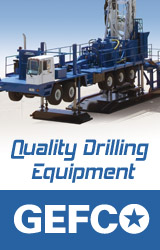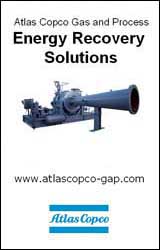Enhanced Geothermal: Clean Energy's Holy Grail
 By Tom Rand, P.Eng, PhD
By Tom Rand, P.Eng, PhD
Everyone knows we mine the heat of the earth for clean energy. We use low-grade heat found everywhere beneath our feet to heat and cool our buildings, and the high-grade stuff in hot aquifers to make electricity. That’s old news.
There’s a new game in town, however, and one that holds considerable promise. The guys from Google are in on it. The Australians are drilling like mad for it. It’s the one clean energy that could bump coal off the podium.
Tomorrow’s geo is called Enhanced Geothermal Systems (EGS), and it’s based on the simple idea that high-temperature heat can be mined pretty much anywhere—if you only drill deep enough. In most of the world, the ground that’s six miles (10 km) beneath our feet is dry, but as hot as the hottest aquifer. That heat can be mined, brought to the surface, and used to generate electricity.
The potential of geothermal energy once EGS is brought into commercial operation cannot be overstated—it is simply colossal.
A recent study by the Massachusetts Institute of Technology (MIT) noted that the total geothermal energy available within six miles (10 km) of the surface is 130,000 times the entire US energy needs. Obviously, not all of it can be tapped, but even conservative estimates of recoverable energy indicate there’s between 3,000 and 30,000 times our energy needs down there. This isn’t intermittent power like solar or wind—this stuff is available all day, every day, all year round.
How does it work?
Drill down a long way—2.5 miles to 6 miles (4 km to 10 km)—to reach hot rock approaching 400°F (200°C). Drill another hole, some distance away. Pushing water down the first hole at high pressure fractures the rock between the two holes. To mine the heat, pump liquid down one hole, through the volume of rock, and up the other. Grab the heat at the surface and use it to generate electricity.
Sound difficult? We already drill miles down in deep oceans (think BP and the Gulf) to get at small pockets of oil, and we fracture rock all the time to get shale gas. EGS is the same expertise.
To get a sense of how much energy is there, just imagine a 70,000 tonne pile of coal. Extracting enough heat to lower the temperature of a piece of rock 1 km3 in volume by just one degree, gives as much energy as you get burning that pile of coal. That’s enough to power 14,000 homes for a year.
An EGS plant that powers 100,000 homes takes up less than a square-mile (2sq km), and uses a 5 km3 underground reservoir of rock. When that plant runs out of heat, which would happen every six years or so, then you simply drill new holes a few miles away. The earth gradually reheats the original area. This is truly renewable energy.
The real magic of EGS is you can drill for it pretty much anywhere. London, Adelaide, Toronto, or New York, it doesn’t matter.
What has been done so far?
Starting with experimental projects in the 1970s at Los Alamos National Laboratory, US, and in 1980’s in Cornwall, UK, methods were developed to make fractures in hot, dry rocks way below the surface. A full-scale international collaboration is underway in Soultz, Germany. Small, experimental holes 2.2 miles (3.5 km) deep were drilled in 1997, and the site has been expanded to a full-scale pilot project using three holes 3.1 miles (5 km) deep. Water pumped into one hole emerges from the other at about 400°F (200°C). A power plant big enough to power 1500 homes is in operation.
Soultz is not the only project. Drilling has started at several locations in Australia, including Paralana and a massive project at Cooper Basin. There has been an operational plant in Landau, Germany since 2007 that produces enough power for more than 6000 homes. Sweden and Japan are in on the action. The first commercial plant in the US, partly funded by the US Department of Energy, is planned for Desert Peak, Nevada.
The guys from Google see promise. They’ve invested in Potter Drilling, which has invented a faster, cheaper way of drilling using super-heated water to fracture the rock.
There are pitfalls.
EGS is still in early stages of commercial development, and there remain technical uncertainties related to the geophysics of deep-earth rock fracturing, water flow, and loss rates. We need to know more about using and expanding natural fissures and cracks in deep rock formations, and about how that structure will respond to having large amount of heat extracted over time. In Basel, Switzerland, there were reports of seismic disturbances when an EGS system was activated, and we must certainly mitigate that risk.
But these are the sorts of challenges the engineering and scientific community solve all the time. The real barrier to widespread deployment of EGS is economic incentives.
How do we get it going?
MIT figures EGS needs a $1 billion R&D ‘kick-start’ (spread over 15 years) to establish the engineering know-how. At that point market forces would take over. They estimate that, by 2050, enough EGS systems would be built in American soil to satisfy 100,000,000 homes, or 10% of the total expected US electrical demand.
That’s a conservative estimate of the potential, since it relies heavily on market forces and a natural rate of uptake. With a price on carbon, and access to low-cost debt, adoption rats would be much faster.
Want to replace coal? Start drilling EGS holes beside every existing coal plant. Replace the furnace with a heat-exchanger. Keep the rest of the infrastructure—turbines, transmission lines, etc. If the input cost of coal plus the carbon liability is more than the monthly bill for the EGS plant, then it’s a no-brainer. Coal plant owners would come onside.
There are no magic bullets on the clean energy front; every technology comes with technical and financial risk, particularly when it comes to project finance. But on a straight-up energy front, EGS seems to be as close to being a holy grail as one can find.
In his recent book, “Kick the Fossil Fuel Habit: 10 Clean Technologies to Save Our World,” Tom Rand advocates thinking big—as big as we now think of fossil fuels. To spark the imagination, he asks: ‘What do you get for a trillion dollars?’ A trillion dollars of EGS gets around 400 GW of capacity, capable of replacing North America’s entire coal infrastructure.
More information and an interesting video relating to this story can be found at www.kickthefossilfuelhabit.org.
Author: Ian Stuart
Volume: Nov/Dec 2010











